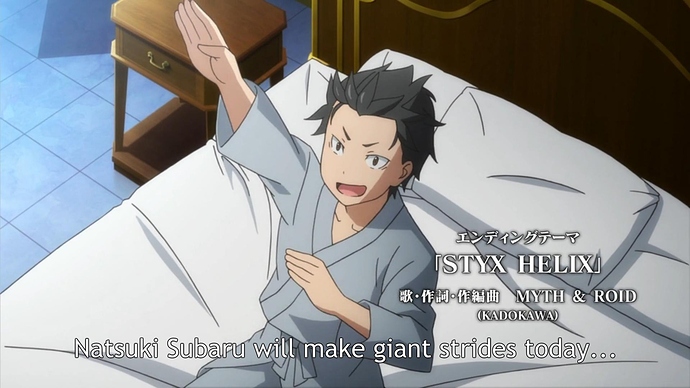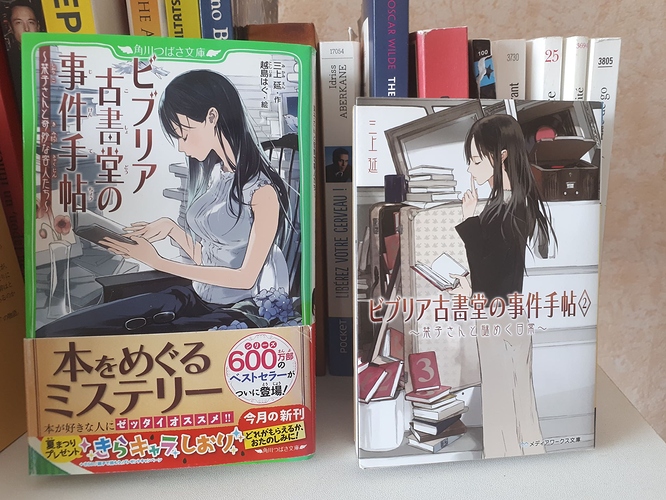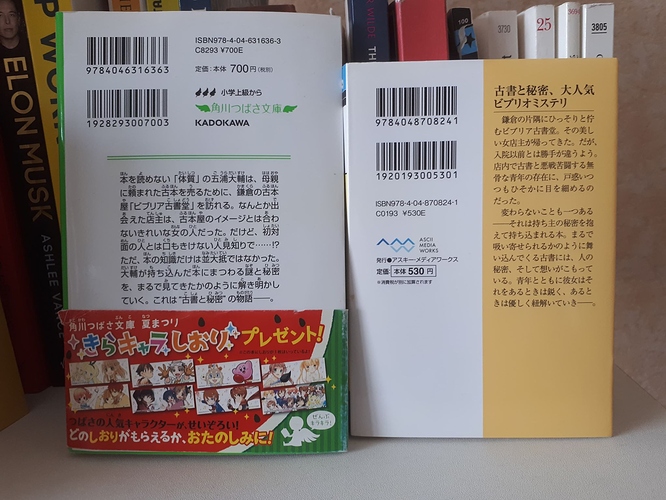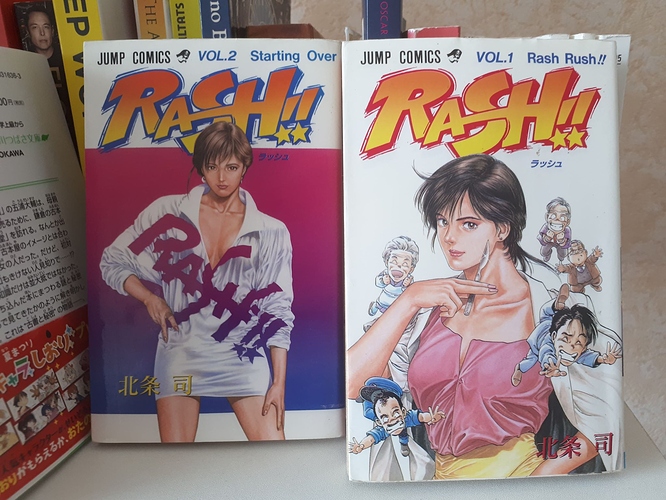That’s very true and good advice but some people have a lot more trouble trying to do that than others. If your deeply ingrained habit is to think more negatively and you’re surrounded by people who reinforce that, even if on some days you can maintain a positive attitude through great conscious effort, kind of grinding against your natural grain, on other days you may not be able to.
You can try to make a conscious decision to try to think about things in more positive ways, but the way you think is also influenced by chemicals in your brain and conditions like depression so, if you have a lot of trouble trying to maintain positive thoughts, it may be more difficult for you to keep yourself in a positive frame of mind and in that case you have to try to just keep pushing, whether its pushing to try to keep the positive frame of mind or just pushing yourself through getting the activity done in general.
The hardest thing is to get through the first page and the first few unknown words or sentences. The first 3, or hardest three minutes in an anime or drama too.
Any book, manga or even drama/anime you pick up will have either a too advanced level where you struggle or/and a really beginner level where you don’t even need to think about it. No matter what your own level is, you should always expect that.
So I use a mix of the +1 method and getting acquainted to someone/something psychology.
basically, you take someone or something in this case, that you really enjoy, like detective stories and thrillers.
From there you either pick up something you already know or you don’t know but have a huge interest in.
Let’s say you already have seen Death Note’s anime version with english subtitles. Or read the manga in english.
Pat yourserf, you already did the getting to know part. And if you listen with japanese audio, you at least have a few entries in your brain for +1 words and other inferred sentences.
Now comes the hard part. Everyday, you pick up a volume of the manga (1 page per day, up to 3 max), or 1 episode from the anime/drama, either with japanese subtitle to practice reading and checking comprehension at the same time or without subs just for listening practice (3 or 5 or 10 minutes of said episode are all viable options, a whole episode is okay only once you know all the mini parts, to build fluency).
That one page, or these 3 minutes are your only challenge for the day. Pick up every thing you can from it, absorb it, review it or just decipher it the very first time. It’s okay to look 30 words in the dictionary, you just want to have a brain entry for them. Try to say the words and sentences out loud and hear yourself stutter. It’s okay too, your brain will get it to work eventually, but first it has to know the words and go beyond the fear of unknown factor.
All you need is to crush that one page/these 3 little minutes and then you are done for the day! pat yourself again. The goal is to be fluent in understanding speech so at the end of the episode, you should be able to re-watch it without any subtitles fairly easily.
The easy part is tomorrow, you wake up and do your things and then you go back to that b*tch page or these three f-in minutes and see how fluent you got on it ? then forget about it and repeat yesterday’s action for the next page or next 3 minutes…and so on until you got a chapter or an episode. Review that first page only if 7 days have past and you have not yet reach the end of the first chapter…will happen a lot with death note lol.
But when you reach that chapter’s end, that’s when you really want to try that first page again and then, Zimbalazim, you can’t stop reading, you fluently read most of the pages until the end of the chapter and you already are very familiar with the situation…you notice new things etc.
It gets a bit boring but also very exiting because now you really want to read the rest!!! congratulation, you got out of the fear of reading and even enjoyed the process (though you hated it at first).
Hope it helps and don’t be ultra lazy, flashcard the heck out the pesky words that you think will be useful, don’t think you’ll remember them easily…
Conclusion for TLDR:
With Manga (or a novel, start with manga, it’s easier, less words and more image to infer meanings):
-Read one page per day, out loud, in your head, look up everything, don’t need to learn it just to have a blue print in your brain.
-Review yesterday’s page before doing today’s page.
-If you reach the end of the chapter, review all pages from this chapter before moving on to the next.
-If 7 days have past and you have not yet reach the end of the chapter, review the first page only, and tomorrow the second page and so on until you reach the end of the chapter, then you just go through the step before this one.
Drama/anime:
-Same as manga but do 3, 5 or 10 minute sessions everyday.
After a while you’ll do more pages in one go, more minutes as well. but the first time is really slow so bear with it and really pick something you are very interested in, so you really want to find out the next day what happen.
Confucius: " The hardest step toward a journey of a thousand steps is the first one. "
Hope it helps, Good luck 
I just read your answer after posting mine. We’re saying/ doing the same thing and that’s awesome!
Glad to see it works for other people.
Good luck on your learning journey ! 
Thanks, and same to you. You wrote out in much more detail.
The way I started with reading was Graded Readers (I picked the Ask series), and I’ve read all the volumes of level 0 and 1 and I’m currently working my way through level 2 (if only I had more time). Graded really is a nice way to get into reading. And I also happen to enjoy reading fairy tales (which at least Ask have a lot of) and other short stories. So I really can’t complain about the content.
Then recently I also started reading with the WK book club, specifically the Absolute Beginner one. (I will admit I’m a bit intimidated by the beginner book club yet, but I’ll probably try the next pick that sound interesting there.)
I really can’t recommended graded readers enough. They are perfect for finding +1 material, and while reading all level 0 volumes was a bit overkill. Reading one of them will get help getting over the initial bump when starting to read (especially the not recognizing words you’ve learned through SRS). Then I’d go to level 1 or level 2 (or higher) depending on grammar and vocab knowledge. (I wouldn’t have started with level 0, except I’d only barely gone through N5, and for that level 0 was a bit easy, level 1 at the perfect spot to get comfortable reading, and level 2 is currently a perfect +1 after all that practice plus being further along in my grammar/vocab/kanji studies.)
Oh, of course. Sorry if I made it sound easy x’D That wasn’t my intention. Mental illnesses make processes like these much more difficult. But even if you can post a sticky note or something around your house as a little reminder, I think it’s helpful in the long term 
I remember reading level 4 part 3, which was fairly my+1, and it was really pleasant. I was lower intermediate at the time, now I’m higher intermediate.
Excellent for shadowing (it has audio) and increasing reading skills this way or hearing at native level speech speed.
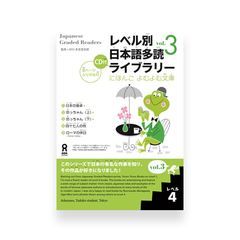
I found it pretty distant to real life adulthood japanese though.
I knew most of the fairy tales in it and my hearing skills far outweigh my reading skills.
So in that sense, listening to the audio while reading, I felt like it was not as much a challenge as the seinen and other novels that are more native speaker and adult learner oriented that I was trying (painfully) to read…(even without audio actually, because it’s very easy to infer meaning in this serie and most fairy tales in general. They follow patterns so once you’ve heard enough of them, it gets much easier to understand the plot without knowing every detail).
But that is not my point. I just really felt it was more appropriate for children native speakers or up to a medium level of japanese for an adult learner in term of challenge and self progress.
So for a beginner up to lower intermediate I would definitely recommend the graded reader series as an introduction to reading, listening and culture.
I’d say N4 - N3 readers will be the most able to enjoy the content and progress with it.
Because it is a great way to start reading without forgoing the hearing part and just like you, I love fairy tales / horror stories so if anyone else like them, go for it! It was darn fun!
My favorite was “The woman without face” story…but no spoilers haha!
So like I said, the lack of challenge and novelty/ realism is why I quickly moved to manga and novels.
Mainly because it has no audio to rely on, has much longer and harder sentences, even has age-related content. That was much better suited for me by then, though I still struggle like hell reading them…
By age related content, I mean you can find the same volume of a manga with furigana for younger people and without furigana for adults. You can also find the same thing for novels. And the whole thing is genuinely targeted for native speakers or at least adult learners.
Though I really feel there is a gigantic gap between graded readers and even a shonen manga like Naruto or HunterxHunter where the politics gets heavy etc.
In that regard, shojo manga and classic teenage manga might be a tad less difficult to start with, especially romantic comedies like Kimagure Orange Road…which I feel is like dead on N3 (intermediate)…even the anime, you can understand almost everything without subs and you feel fluent but you are really not, it’s just a really intermediate friendly medium.
I have some novels with furiganas and others without. You just ask your japanese book store clerk and he’ll help you to the section that suits your needs best.
On top of that, I tend to buy books about drama/anime that I have already seen, liked and want to retrace as a native because I deemed the content close enough to something I would use in everyday life or just need if I had to watch a similar content with a japanese person and wanted to have a conversation about it afterward.
The hard part for me is news. Very specific vocabulary, mostly passive but very necessary (You hardly talk about earthquake until after they pass lol…but you are darn happy to know the word when the news flash hit your phone or TV the night before it happens!!)
I took pics for the ones interested in novels with and without furigana. The novel is “biblia koshodou no jiken techou”.
As you can see, vol 1 (left) has furigana over the kanji while vol 2 (right) has not.
The inside is a novel, so it’s mainly text and sometimes you’d have a picture after 10 pages for context or illustrative value, but nothing more unlike typical manga.
On the other hand, I’d like to propose a really easy manga to read. Only two volumes. Has a Heroine instead of the classic hero and is made by Tsukasa Hojo (City Hunter series). It’s called “Rash” (they meant “Rush” but who cares).
No furiganas, from the 90s but like I said, dead on N4-N3, only two volumes, lots of pictures and action and you can infer most of the vocab (to the point I almost cry when I realized I could understand something like that even without understanding or beeing able to read everything!)
And no, it’s not hentai…more like shonen for girls…(action packed, not romance packed)
About the books with furigana - added the 2020/03/04 -
This is a collection aimed at japanese natives from middle to high school. It’s made by Tsubasa Bunko which is also a website with tons of free literature for said middle and high schoolers (Has furiganas and has much more modern stories from famous series than it’s counter part, Aozora Bunko).
Check it out if you can !
Here you can check four links, including aozora and tsubasa bunko. The last one is a website where you can check the difficulty of a book you want to read compared to what your overall language ability :
- http://aoitori.kodansha.co.jp/
- https://www.aozora.gr.jp/
- https://tsubasabunko.jp/
- http://readyourlevel.jamesknelson.com/grade
You can also check floflo.moe site. It has some articles about reading japanese at different levels, a little app where you can also check your level against the overall vocab you know within the site or WaniKani (needs an account and to have either WK at your true level or at least started to learn some vocab on floefloe.moe through their SRS).
Hope it helps !
By the way, I just got the JLPT N2 thanks to Bunpro, WK and Floflo, this February 2020.
I barely read but I still increased my score by 20 points compared to last year thanks to immersion and the really well made sentences on Bunpro ! I also read more online stuff like post from IG and Twits.
So thank you Bunpro and all of you for the motivation !!!
Hope you get some motivation too and aim higher this year ! Meanwhile i’ll be reading more and aiming for the N1 !!
Good luck !
Yeah you should be cautious about spending too much immersion time with graded readers. One of the primary purposes of immersion is to expose yourself to real natural Japanese kind of ‘in the wild’, ‘in the real world’, to start to develop the intuitive sense of the ‘feeling’ of words and how native speakers use them.
Graded readers are not natural real Japanese.
" Japanese Graded Readers (JGR’s) are written in easy and controlled language for foreign or second language learners of Japanese."
Ideally you should be trying to immerse as much as possible with material by natives for natives. Otherwise you will get stuck in the ‘textbook Japanese’ comprehension comfort zone. You generally wont find most conversational Japanese or slang and so on in those graded readers. They have a kind of fake version of Japanese for second language learners. You probably want to learn natural expressions and how Japanese people express ideas and thoughts.
I recommend watching talk-show type shows through clips that are uploaded to youtube like this: https://youtu.be/zPMSbKxliVo?t=678
You can find lots of other random videos linked off of that one. You can probably find some comedians or types of segnements or something that you find funny or cute or whatever. Japanese who wants to be a millionaire, anything. Theres a show where little kids go on their first shopping errand for the first time. Theres a show where people who work in the customer service industry write in to complain about rude customers and its re-enacted etc.
And I recommend starting with manga that is slice of life and has children main characters like Yotsubato.
Yotsubato can be a bit tough as a first manga because it has so much colloquial language. I personally recommend Aria the Masterpiece. Most of the language is more standard (with occasional colloquial of course) and it’s pretty interesting too.
I have a pretty good solution that worked for me, having had the exact same problem. My advice is start reading manga with Furigana. Once that becomes comfortable for you to do and you’ve read a significant amount (not just a few volumes of Yotsuba) move to manga with no furigana. Again once you feel like you can just pick up any manga without furigana and read it without much trouble you should move to the next step. I would recommend familiarizing yourself with JLPT style readings while you’re doing this (at least being able to read N2 lvl material and comprehend it). At this point you need to decide what kind of thing you are interested in so that you will actually read it. It might be news articles, or short novels. If you try to jump from not reading very much to reading a book (even a beginner one) it’s gonna feel like a slog and you’re gonna get discouraged.
One more thing is to not look up every word, I fact I would only look up a word if you see it and think “ah I’ve seen this before what does it mean again?!” Or if you run into it multiple times, or of course if it looks like something very context important that you need to understand in order to understand the progression of the events happening.
As for listening, I gave myself a cutoff point for when I would switch to Japanese subs only. For example “when I finish this season of terrace house and finish hunter hunter that’s it for English subs, then it’s Japanese subs from here on out.”
At first it will be hard but you WILL get used to it after a bit, and probably faster than you think. That’s true for each jump you make.
At any rate the key is not to get hung up on how much you’re improving or how many words you can’t understand it’s just to read read read, listen listen listen; trust that the skill will come along with that.
As a side note I like to set an hour or so for reading before bed every night to make sure I do it.
It takes time and patience and constant daily effort. I’ve been living in Japan for 3 years and self studying all the while and I still have trouble reading things in the newspaper or novels and terrace house is always throwing new terms at me.
Good luck to you!
I think this is overkill for reading your first book. N3 is more than enough for your first book.
This differs very much person to person. I read my first children’s book around N4 level. It was difficult, and I read only 10 pages a week, but it was doable. What made it work for me was reading at a steady pace with a book club.
I think the most important think is to do something interesting. If someone wants to study for 2-4 years to reach N2 before reading a book, go for it. But personally I would have stopped learning Japanese by now if I wasn’t reading both manga and books along the way.
Just to clarify I meant that while you’re reading whatever it is you choose to read you should also be improving your skills and familiarity with JLPT style readings up to N2. This is not necessary but it will help you a lot when trying to read a comprehend things like Magazine or news articles. If you only read manga and children’s books I think you’ll develop a sort of gap in your reading comprehension.
I don’t mean that you must not read anything for fun and just focus on getting to N2 level for 2-4 years.
You’re right I suppose it’s different for everyone, but I would recommend something like Yotsuba rather than a beginner novel. To each his own.
If you’re at N2 level and you are trying to improve your listening you really shouldn’t be using any subtitles at all. When you’re reading the subtitles you’re not actually improving your listening ability much because you’re just reading and hearing the Japanese in the background alongside your reading. The goal of listening practice is to practice the skill of listening so that you can understand Japanese by hearing it without reading anything. Real life doesn’t have subtitles. JLPT listening tests dont have subtitles. You need to practice what you want to get good at, if you really want to improve listening and you’re already devoting so much other time to reading why not focus purely on listening? Check the subs afterwards to see if you understood it or not but I think you won’t improve your listening as much relying on subs.
Well seeing as I listen to non-subtitled real Japanese for about 9 hours a day at work and then whenever I go anywhere, subtitled Japanese movies or tv shows are really helpful for me.
I was trying to say that Japanese subtitles are the next obvious step from English subs. Of course once you get better you’ll wanna switch to no subs eventually, I just don’t necessarily recommend going straight from English subs to no subs because in my experience it was too much of a jump and I never looked forward to watching anything.
And being N2 level does not mean you can understand any significant percent of native Japanese media without subs. The level of the N2 listening section is so much easier that it’s not really comparable to any real Japanese imo. It’s kind of like graded readers for reading.
Again everyone’s gotta tailor their studying methods to work for them specifically. I just wanted to give my 2 cents for what helped me since OP specifically asked for how to input more.
Oh, I thought that the time you were listening to shows was your main time spent listening to Japanese and aside from that you were mostly just reading.
I didn’t mean to suggest that passing N2 means you can understand native material or even N1 for that matter, but kind of the opposite, what I meant was that you should start trying to watch native material without subs even before N2 if your goal is to improve your listening ability precisely because if you don’t start watching native material without subs you won’t get much better at doing it just from progressing on the JLPT track because as you said, the JLPT stuff is too far from it. Even people who ace the N1 still struggle to understand native media without subs if they haven’t been trying to practise doing it and probably always will if they dont practise doing it. I think this video also by Matt about it is a good example of that: https://youtu.be/k5t37q1neC4
Another example would be the Japanese English teachers in Japan, most of them, in my experience, spend very little time, if any, trying to watch English native media without Japanese subs and so they can’t really do it even though many of them have been studying English for decades and it’s their profession.
Okay yeah sorry for the confusion. What you said was really spot on. I guess I wasn’t very clear in my initial post.
I will say though that if you can ace the N1 listening section you’re probably pretty good at listening cause that section is really hard haha (I think so at least).
Anyways just to reiterate one more time, I recommend OP to take things on in steps if they find themself not inputting because it’s too annoying or unfun or hard to do. Once you start reading manga it will be hard and slow, but you’ll get used to it. Then when you bump up to no furigana it will be terrifying and weird but you’ll get used to it, etc etc.
I’ll add onto this that people should look into the concept of dopamine starvation.
The idea being basically like… if you eat very sweet sugary processed food all the time, then fruit will probably taste bitter and not that great to you. Especially if you eat it right afterwards. If you stop eating white sugar and highly sweetened stuff for a while though, your tastebuds adjust and suddenly fruit tastes much sweeter.
The dopamine center in your brain operates in a similar way to some extent, if you are always doing highly stimulating easy things, then it becomes a lot harder to focus on less stimulating harder things. So basically, if you starve your brain of dopamine, that can be one way of finding watching Japanese without subs and doing other difficult things that require more focus much more engaging. Personally, I have found it helpful.
I am using JA sensei as a mean to learn the language and recently they added a ver nice feature called Assisted reading. Basically you have stories that are read by a native speaker whith the text in from of you . At the same pace of the reading teh text is highlighted and vocabulary are displayed on the side, grammar points highlighted and link to explanation provided. quite a nice Feature worth having a look i think.
https://www.japan-activator.com/en/natural/readalong/text/id/1
Is there anything you can search to find manga that has furigana on all kanji? Since is still fail some of the にん/じん reading of 人, I feel it helps me so much to get it for every kanji, not just some of them.
Most all kids manga I’ve ever come across has it on all kanji. Case Closed/Detective Conan is one example. If you browse through Amazon Japan’s manga ebooks, they’ll let you glance at the first few pages and you can check that way before you buy.
Anything with tsubasa bunko (角川つばさ文庫) on it should have furigana. check their website as well for freebies.
Also the “Alive series” from MFコミックス and Media Factory have them, like the manga version of Re:Zero kara hajimeru isekai seikatsu (Re:Zero から始める異世界生活)
Or just like mentioned above, in books aimed at natives from primary school to high schoolers, you’ll find furigana. You can check some pages on amazon to make sure, but you’ll know just by looking at the back of the book. If the brief has furigana, so will the book.

